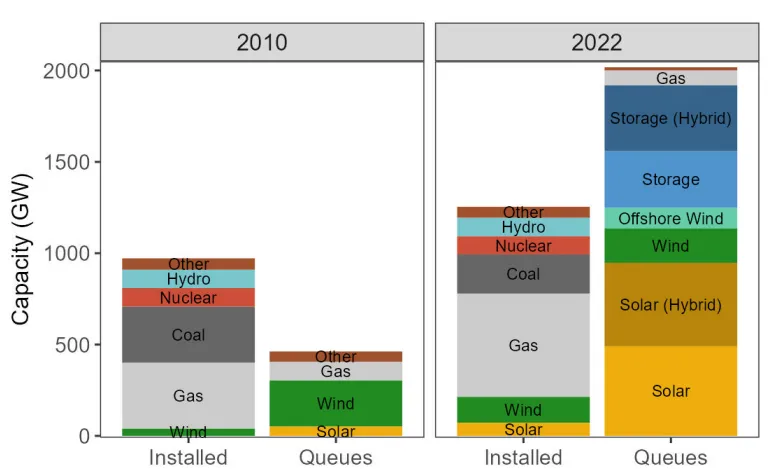Dive Brief:
- The Department of Energy on Wednesday released a draft road map for transforming grid interconnection processes, a major hurdle to the Biden administration’s goal of decarbonizing the power sector by 2035.
- The draft plan, developed through DOE’s Interconnection Innovation e-Xchange stakeholder initiative, focuses on four areas: increasing interconnection data access and transparency; improving the process, including speeding it up; promoting economic efficiency; and maintaining grid reliability. It calls for ensuring more equal access to interconnection queues.
- The draft plan includes good ideas that transmission providers should consider and adopt, according to Rob Gramlich, president of Grid Strategies, a transmission-focused consulting firm. The Federal Energy Regulatory Commission made some progress in its recently issued Order 2023 but there is “a lot more to do,” he said. “Hopefully this effort can be a clearinghouse for new approaches.”
Dive Insight:
In the last five years, interconnection queues — generators waiting to have their proposed projects studied to see if grid upgrades are required to bring them online — have surged.
About 2,000 GW of mostly renewable generation and energy storage are in interconnection queues across the United States, with recent projects taking five years on average to complete the interconnection process, according to Becca Jones-Albertus, director of DOE’s Solar Energy Technologies Office.
“The numbers in the queues, the length of time it takes to get through the queue, the costs of interconnecting systems today, all of those need to be improved to achieve our clean energy goals and the economic benefits that will come from greater wind, solar and energy storage deployment,” Jones-Albertus said in an interview.

About a quarter of the draft plan’s recommendations align with FERC’s July interconnection reform rule, which directed transmission providers to meet various interconnection requirements, including studying interconnection requests in clusters, according to Jones-Albertus. FERC on Thursday extended the original deadline for transmission operators to file their interconnection compliance plans for review by the agency by about four months to April 3.
DOE’s draft road map includes measures that go beyond FERC’s reforms. “Such an approach is important not only to facilitate industry-wide discourse that builds upon Order 2023 but also to maintain usefulness for transmission utilities that are not FERC jurisdictional,” DOE said in the draft report. Transmission utilities generally outside FERC’s jurisdiction include federal power marketers such as the Bonneville Power Administration.
With the surge in interconnection requests, burnout issues have made it hard for transmission providers to retain skilled staff to review the applications, DOE said in the report. “Targeted efforts to increase training opportunities for and improve compensation of existing staff will improve workforce capabilities, increase retention, enhance diverse and equitable representation across the interconnection workforce, and, as a result, expand processing of interconnection applications,” DOE said.
Some of the report’s recommendations include:
- Create new and expand existing fast-track interconnection options, including surplus interconnection service, generation replacement service and energy-only interconnection service;
- Consider market-based approaches to rationing interconnection access;
- Investigate inter-regional transmission solutions through joint transmission planning efforts between neighboring systems; and,
- Explore options for separating the interconnection process from network upgrade investments to increase upfront interconnection cost certainty.
Equity considerations should be included in all aspects of the interconnection process, according to the draft road map.
“Interconnection customers from socioeconomically disadvantaged or Tribal communities may lack the financing, resources, and capacity needed to navigate the interconnection landscape,” DOE said in the draft report.
DOE is taking comments on the draft road map until Nov. 22, and the department aims to issue a final road map in a few months, according to Jones-Albertus.












